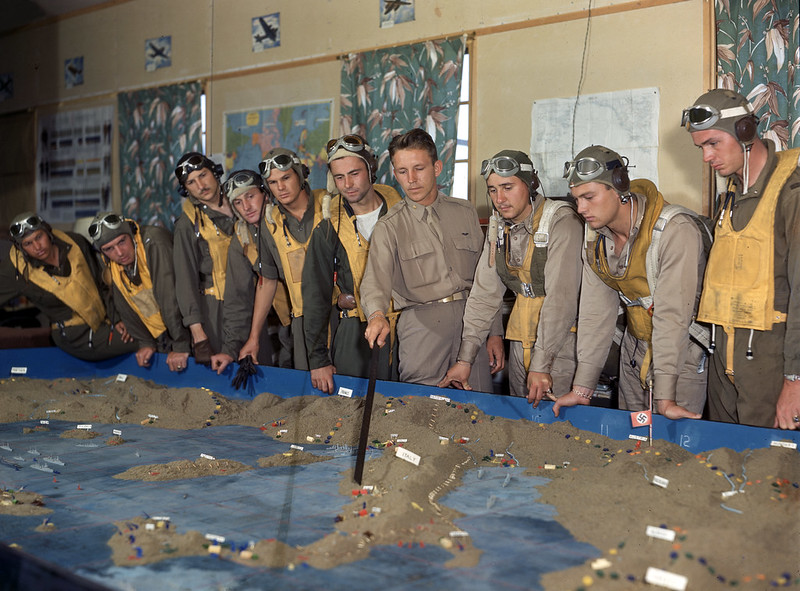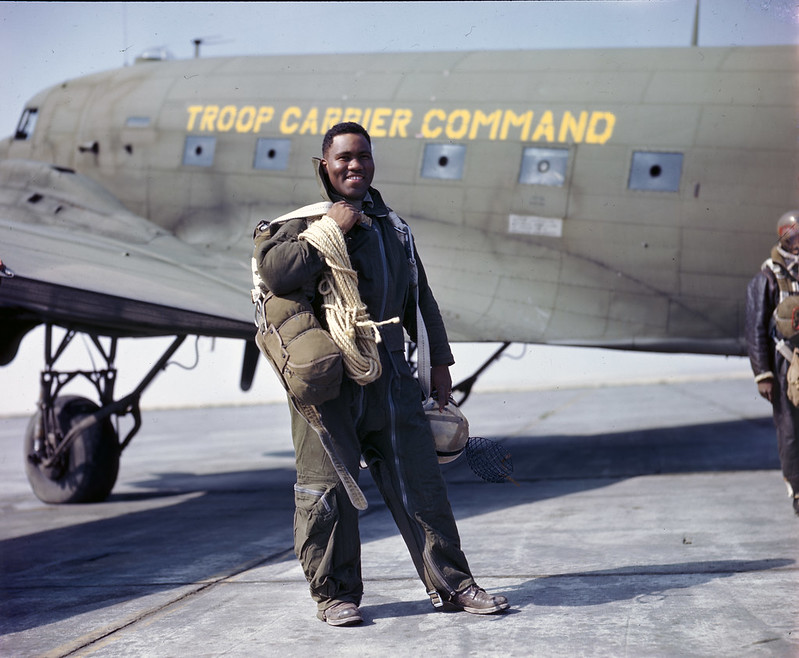
World War II in Color
Aug 20, 2020
By Roger Connor
World War II is one of the best documented conflicts in history. Millions of photos and miles of motion picture film stock provide a rich visual documentation of the conflict in both its brutal violence and celebration of martial purpose. Color photography, though not new, had only just become widely available when the war began. Existing color images of the war are not hard to come by, but they are considerably rarer than black and white images.
As the lived experience of World War ll fades away, the use of original color imagery provides a sense of immediacy for younger generations for whom the war is often a vague and distant event from the last century. As part of the National Air and Space Museum’s renovation, which involves exciting new exhibits in our flagship location on the National Mall in Washington, DC, Museum staff and volunteers are scanning World War II color photography that will be used in a vibrant display of Americans at war in the air. Large high-resolution images of both new and known moments of the war will give visitors a chance to experience this conflict in a new light.
This project is not without its challenges. The color transparencies are exceptionally fragile, and archives have to limit access to them, which in turn limits their broader use in exhibits and books. Another challenge is that much of the photography is grainy. Government photographers with professional labs tended to have the best results, but they were not often shooting from the front. This means that photos of the front were often taken by amateurs in less-than-ideal conditions and with poor equipment.
The following images are only a small number of the thousands being scanned, but they give an idea of the range of wartime experiences documented. They come from the National Air and Space Museum Archives collection, National Archives and Records Administration, and the Library of Congress. For those images not already available digitally at high resolution (such as those at the Library of Congress), the exhibit team will make them available over time.
View a sample of the photos below, or in our Flickr album.
To view the full descriptions of images below, click on the • • • icon (three dots).
Images can be downloaded in full resolution by clicking on the image and downloading via Flickr webite. Please note that a desktop web browser is required (or a mobile browser in desktop mode) to access this feature.
Roger Connor is the lead curator for the Museum’s new World War II gallery in development.
Related Topics

We rely on the generous support of donors, sponsors, members, and other benefactors to share the history and impact of aviation and spaceflight, educate the public, and inspire future generations. With your help, we can continue to preserve and safeguard the world’s most comprehensive collection of artifacts representing the great achievements of flight and space exploration.
Support the Museum
We rely on the generous support of donors, sponsors, members, and other benefactors to share the history and impact of aviation and spaceflight, educate the public, and inspire future generations. With your help, we can continue to preserve and safeguard the world’s most comprehensive collection of artifacts representing the great achievements of flight and space exploration.




























